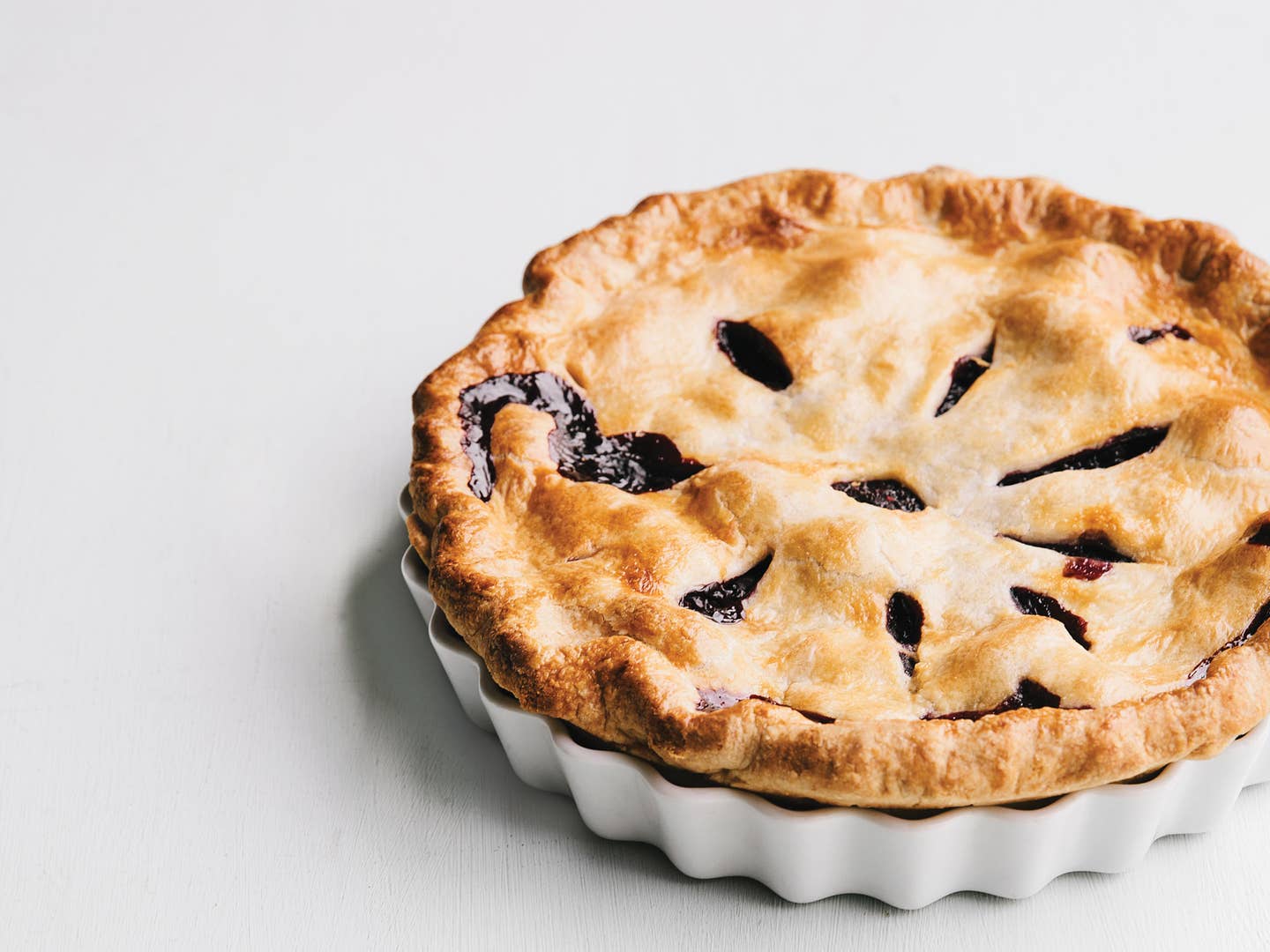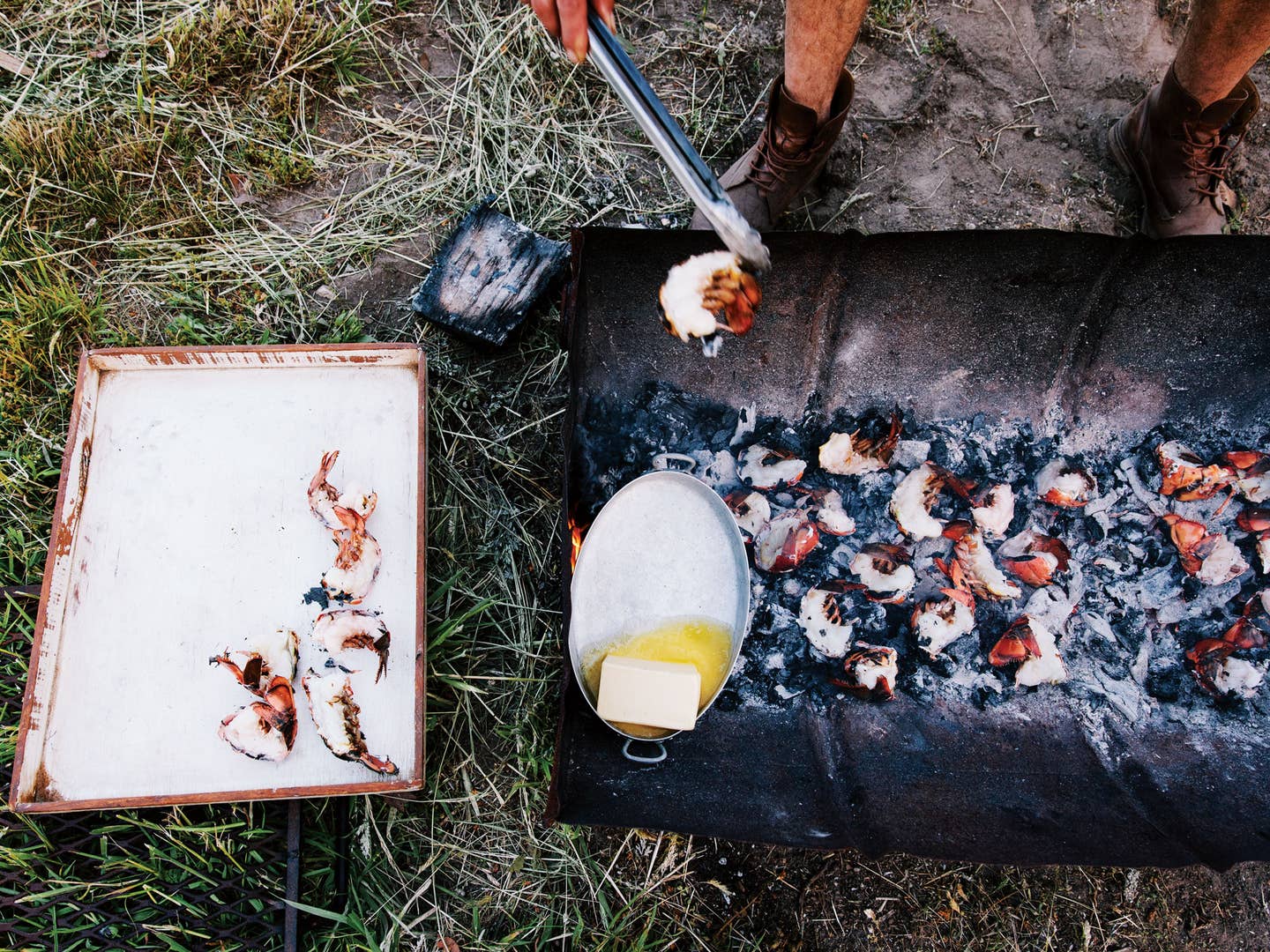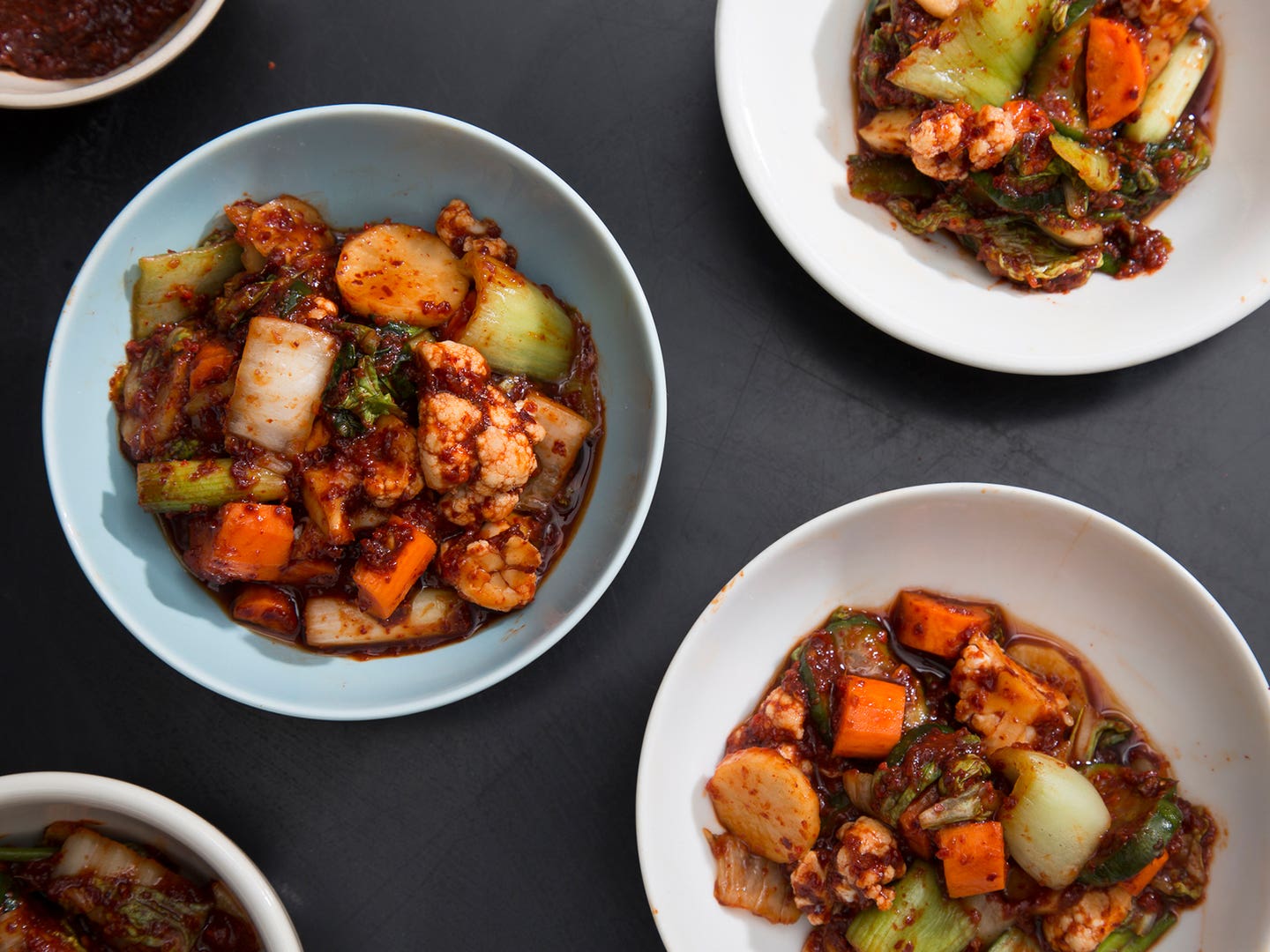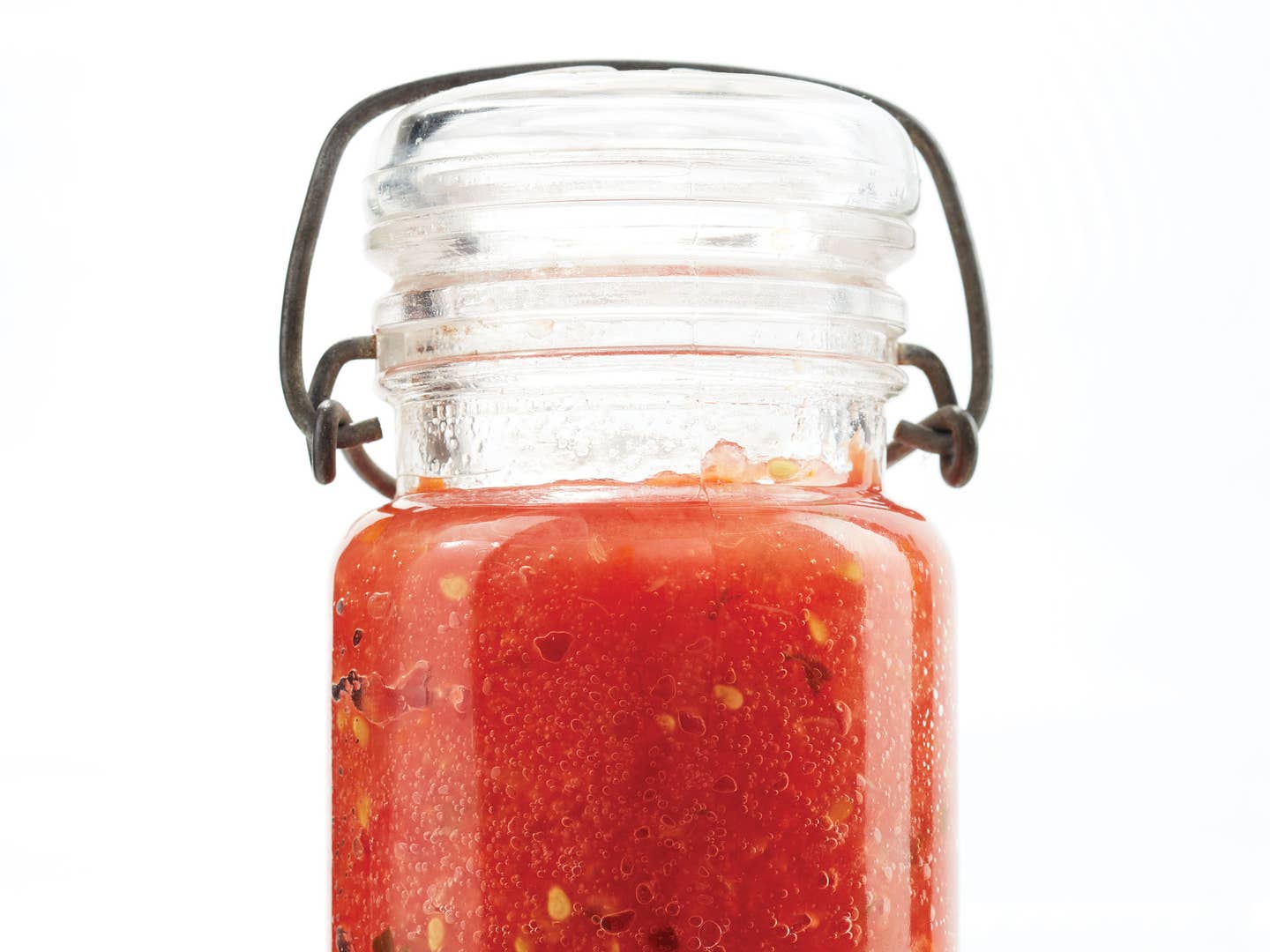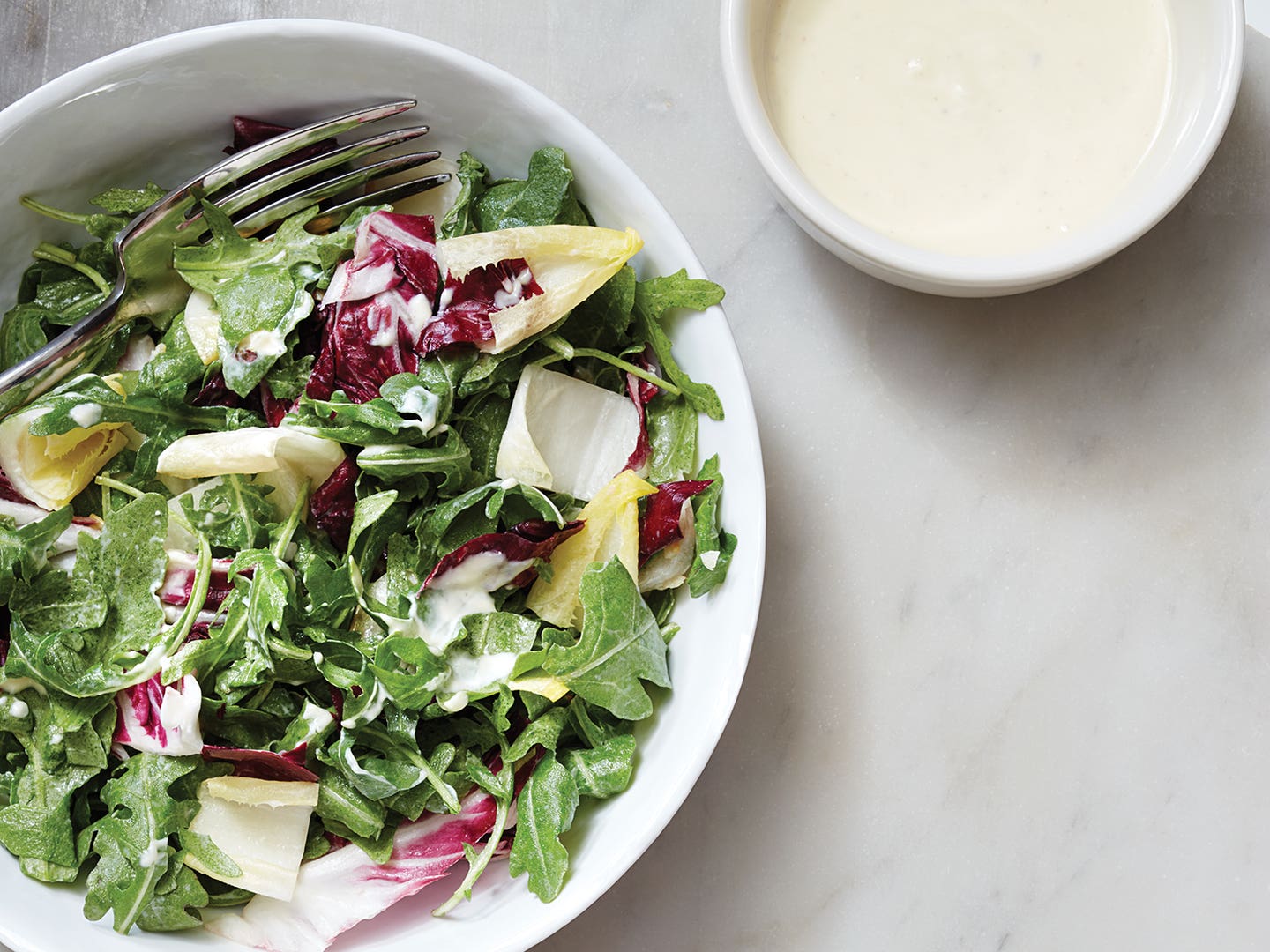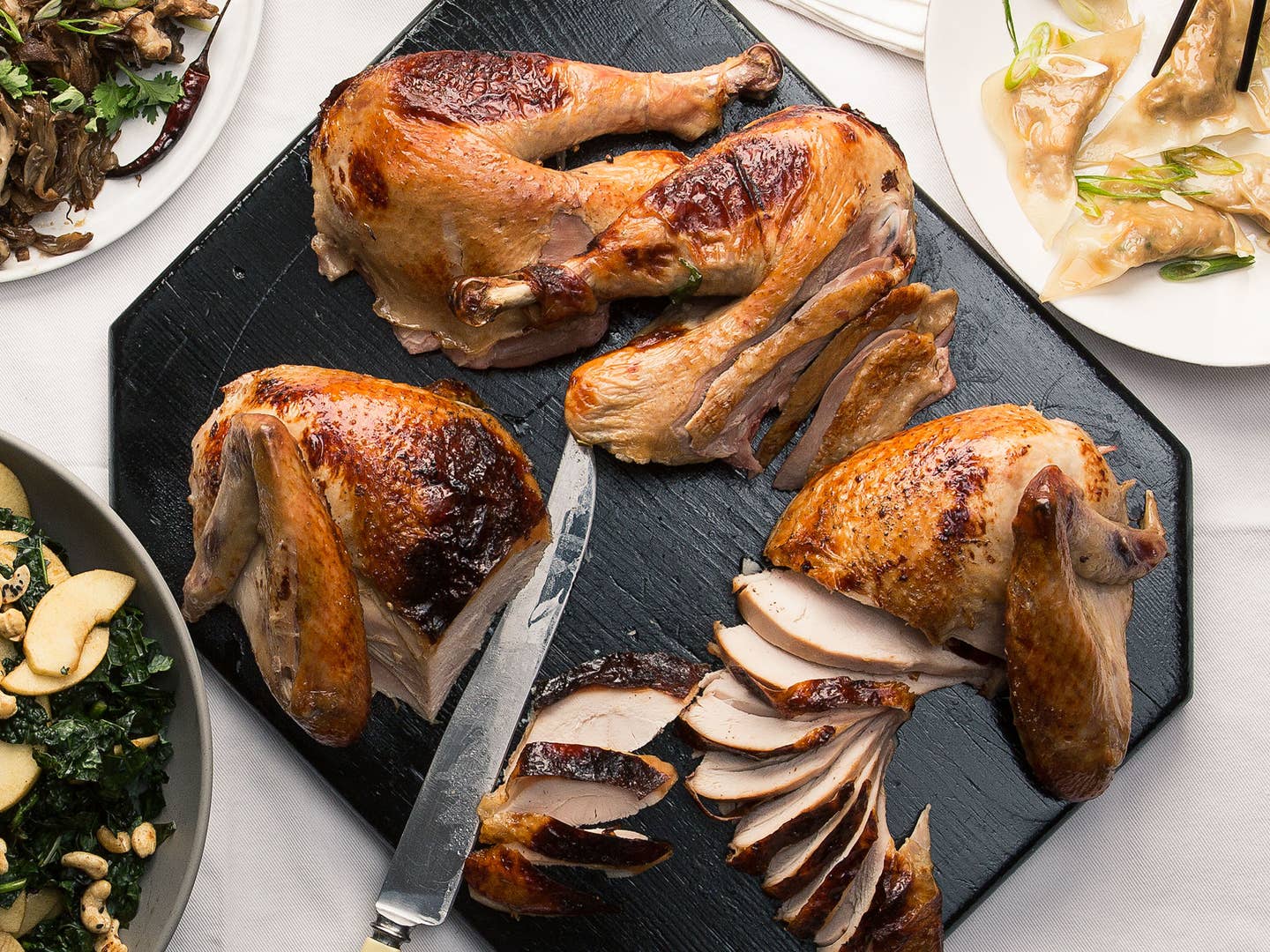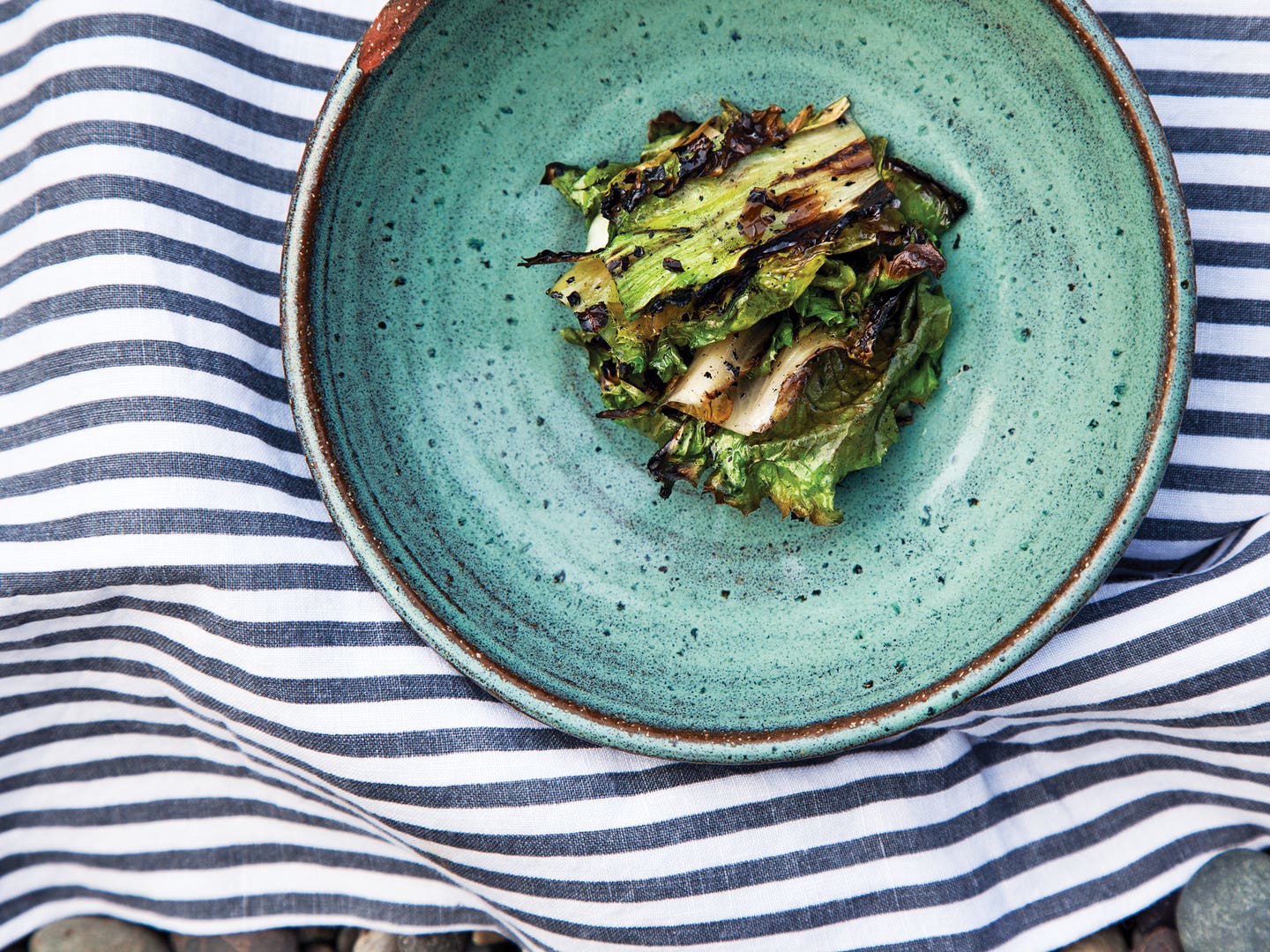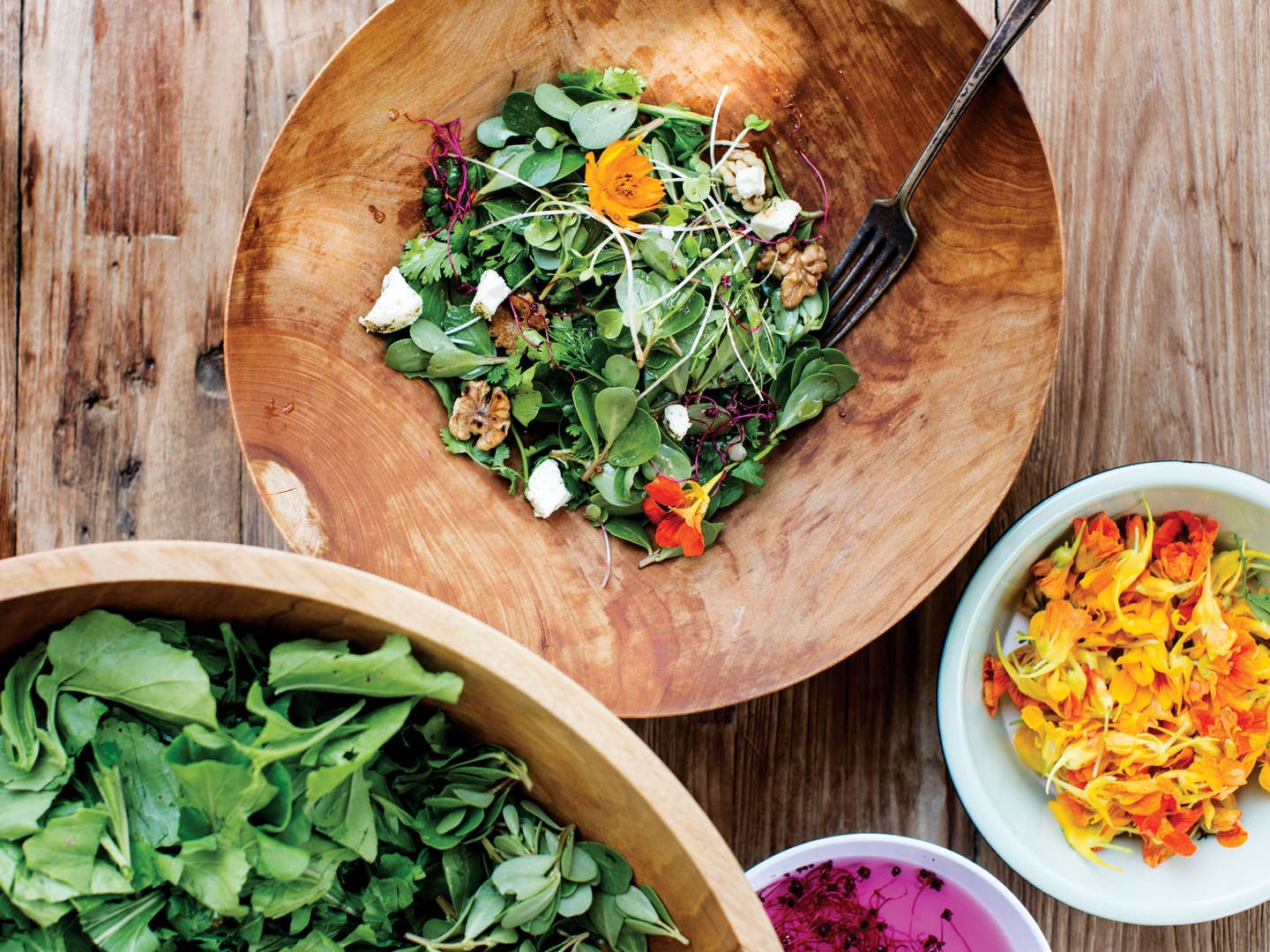

Inspired by his neighbor Olivia Pattison's recipe, chef Chris Fischer uses tapioca in the filling of this pie because it thickens the juicy berry mixture without imparting its own flavor or becoming gummy. Most of us turn to flour or cornstarch to thicken a runny pie filling—we're looking at you, berries. The problem? Both can lead to a starchy taste. The clever solution: tiny tapioca pearls. Olivia Pattison, formerly the baker at Martha's Vineyard's Beach Plum Inn, tosses tapioca with berries and other fruit to create a perfectly set pie in minimal time with no unwanted added flavor.
Forget the enormous pot of boiling water: Martha's Vineyard's Chris Fischer, author of The Beetlebung Farm Cookbook, simplifies his lobster-cooking in two easy ways. Step one: It may seem a little barbaric, but butterfly or halve the live lobster with one cut straight down the middle, then give each of the claws a small crack to help them cook faster. Step two: Throw the lobster directly onto hot coals, shell side down. The shells will insulate the meat and cradle the natural juices, tenderizing what can sometimes be a rubbery protein, and the meat will become even more smoky than usual. After a few minutes: dinner time. Serve with melted butter for dunking; eat with your hands.
It's one of the most nutritious plants on the planet—second only to lamb's quarters, says food writer Michael Pollan—but purslane is prized for more than its super potent concentration of vitamins, minerals, and omega-3s. "Purslane is a gem," says Georgia chef-restaurateur Hugh Acheson. "It grows like a weed but tastes like a little gift from Mother Nature with a lovely acidic punch." Acheson uses the succulent's leaves in salads or as a garnish. Aaron London of AL's Place in San Francisco likes to sauté purslane in foamy brown butter and finish it with Meyer lemon zest, while Jamie Bissonnette of Toro in New York City and Boston grills it and also simmers it in fish stews—its meaty leaves stand up to intense cooking methods. Despite its passionate following among chefs, purslane is designated a "noxious weed" by the U.S. Department of Agriculture—which just means it grows easily and quickly. A bane to gardeners is sometimes a boon to eaters.
Americans tend to think of kimchi as the spicy and fermented Korean cabbage you find in a jar or wedged atop a taco at your town's hip taqueria. But while Napa cabbage kimchi is the most popular type of kimchi, other vegetables like daikon radish, Persian cucumbers, bok choy, chives, and green onions can easily be "kimchi'd" to give them that unique marriage of salt, fire, and funk. When I was writing my Korean cookbook, it became pretty clear that kimchi is more a verb than a noun, and that "kimchi'ing" something doesn't necessarily require weeks of fermentation. You can kimchi carrots, cauliflower, broccoli stalks, and butternut squash. Romaine lettuce can be tossed with a kimchi marinade, which I like to call the "guts" of the larger, traditional recipe, and eaten immediately. Of course, you can allow your kimchi to bubble with all the good bacteria a couple of days at room temperature and then up to a month in the refrigerator. The vegetables will transform from fresh and crunchy to soft and savory. So the next time your CSA box is stumping you, think of your favorite new verb.–Matt Rodbard
This fizzy, fermented tomato pulp is our new favorite goes-with-everything mix-in. When London-based chef Olia Hercules was growing up in Ukraine, tomatoes were an integral part of her family's diet, so it was crucial that her mother and grandmother find a way to keep them around during winter. They'd often brine the tomatoes whole in a mixture of tomato pulp and sea salt, allow them to ferment at room temperature for a few days, then purée the lot together. "I just bottle it up and keep it throughout the winter," Hercules says. "It gets a little fizzy, too, and adds this really incredible flavor to soups." While rich soups get a particularly nice balance from the zing, it's great in all types of sauces and dressings, or as a surprising, effervescent kick in a bloody mary.
Homemade Crème Fraîche and Preserved Lemon Salad Dressing
Homemade Crème Fraîche and Preserved Lemon Salad Dressing
Crème fraîche. It's one of those expensive grocery-store items that's so easy and cheap to make at home yourself, you really have no excuse not to have it in your fridge at all times. Alana Chernila, author of The Homemade Pantry and The Homemade Kitchen, picks up a pint of cream on every grocery run, mixes it with a little cultured buttermilk (or buttermilk culture, a powder you can order online), and the next day, voilà, a bowl of slightly sour, thick, lush crème fraîche. "It's perfect for adding tang and richness, and it doesn't have that weird pucker of sour cream," says Chernila, who finds herself adding it to salad dressings, drizzling it on tacos, and folding it into pumpkin pie. It will keep for up to three weeks in the fridge—more than enough time for you to pick up some cream and make yourself another batch.
Turn Your Oven into a Smoker
Inspired by the flavors of Peking duck, this turkey is infused with a Sichuan peppercorns, fennel seeds, and fresh ginger brine, then lightly smoked over oak.
At SAVEUR, we smoke all sorts of things in our test kitchen—ribs, brisket, plenty of vegetables, and, of course, lots of Thanksgiving turkey. But not everyone has a smoker, so food editor Ben Mims and test kitchen assistant Jake Cohen put their heads together and came up with this—we'll say it—brilliant workaround. Taking a cue from stovetop smokers, which are essentially metal boxes with a compartment for wood chips, they simply turn an oven into a smoker by putting a foil packet of “stovetop” wood chips inside it. They get the chips burning in a foil packet on the stove (stovetop wood chips are ideal because they're cut much smaller than usual and start burning quickly), then transfer the packet with tongs to an oven rack right under the meat and cook the meat low and slow until it's infused with a delectable smoky flavor.
Why limit your grill to meats and hearty vegetables? We like to throw our greens on the grates, too, because a little time on the fire softens the woody, crunchy edge of lettuces like chicory, escarole, puntarelle, and radicchio. Plus, some smoky char adds a complexity of flavor that plays nicely with a sharp vinaigrette. Jeremiah Stone, chef-owner of New York City's Contra and Wildair, takes another tack, juicing grilled cabbage, adding a little vinegar and brown butter, and tossing that over raw slivered cabbage, to showcase both the smoky and bright flavors of the Brassica. He applies the same technique to most in-season vegetables, from asparagus to broccoli.
Keep Reading
Continue to Next Story
